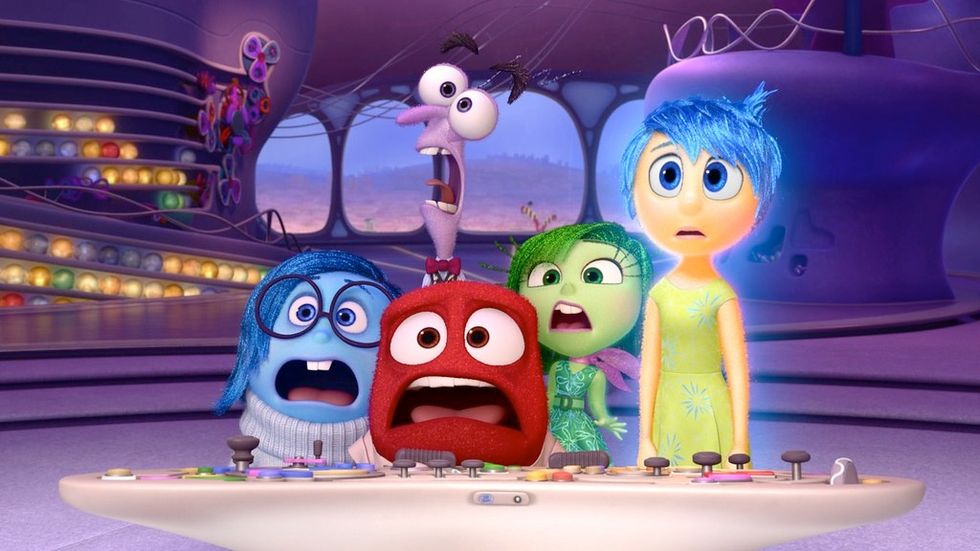"Inside Out" is a Disney Pixar film that looks inside the mind of a young girl named Riley as she transitions to early adolescence. Her once static world takes on a great change as she moves across the country to San Francisco. I only recently watched the film and was fascinated by the science behind the movie and wanted to learn more.
I started by asking questions such as "How much of it is accurate?", "What lessons can you take away from the movie?" and "How does this movie benefit the science community?" What I have learned is that "Inside Out" is a valuable tool for any age to understand a simpler version of the complex world of emotions. While this movie may not be extremely detailed in the realm of science, it draws on broad themes and theories from neuroscience and psychology that we all can find valuable.
Pete Docter, the creator of "Inside Out," came up with the idea for the movie because he himself had an 11-year-old daughter and was struggling to understand her and how she withdrew from life facing the changes of puberty. He enlisted the help of scientists to consult on the film, including UC Berkeley professor Dacher Keltner, who studies the psychology of emotion.
Inside Riley's mind, she has five main emotions acting as personified characters in her mind: Joy, Sadness, Disgust, Anger and Fear. What "Inside Out" does well is creating lovable characters from all the emotions. The important lesson introduced by the film is the fact that all emotions are important to feel.
If you avoid certain emotions, it can be detrimental to your wellbeing. Emotions are necessary. They act as the response to certain stimuli and open our world to social communication. For instance, fear is a response to a dangerous situation, while sadness brings about reunions and reconnection or a need for emotional intimacy and healing.
This is where Riley's Sadness becomes the hero of the film. As Riley faces new experiences when she moves to a new city, Joy constantly avoids Sadness, but this ends in chaos. Joy and Sadness fall out of "headquarters" and need to find their way back before Riley's emotions lose control, and she grows numb to the world around her. By the time Joy and Sadness find their way back, Joy accepts Sadness' value to help Riley move on so that she is able to be happy once again.
In an interview for the University of California, Dacher Keltner says that the number of emotions recognized by scientists varies, but most include surprise, amusement, envy and pride, along with the five emotions in the movie. For simplicities sake, five emotions were chosen as the focus of "Inside Out." Joy seems to take center stage in the movie as she is Riley's main emotion.
This connects to the concept that any person has a different personality and temperament. Some children are calm naturally, while some jump for joy to laugh with others, as Riley does. Our identities are greatly intertwined with emotion. It is currently thought that our temperament is determined by genetics as well as family background.
We are not a "blank slate" when we are born.
"Inside Out" also touches on the concept of memory. An important aspect of memory that is reflected in the film is mood-congruent memory. For example, when you are happy, you will recall other happy memories, and when you are sad, you will recall other sad memories.
In a more mature person, we learn emotional regulation, and the mood-congruency effect can be reversed by recalling a happy memory when one is sad. It is a tough cycle to break, however. As we go through puberty, our emotions become more complex and intertwined, as seen near the ending of the film where Joy learns that a memory can be both happy and sad. Once she accepts this, Riley's "control board" for emotions doubles in size and opens the door to puberty in the final moments of the film.
An important thing to remember about the movie, however, is that it is just a visualization of emotion. In reality, there are thousands of neurons and synapses involved, and emotions are all controlled by chemicals and the interactions between them. The brain is a mysterious organ that scientists continue researching and learning about every day and the theories behind memory and emotion are constantly evolving.
One of the most difficult aspects of science research is communicating it to the public in a way that is easily understood and connected with. In "Inside Out," these scientific concepts are introduced in a way that makes them feel emotionally invested in the characters and is accessible to any age.











 Photo by
Photo by 








